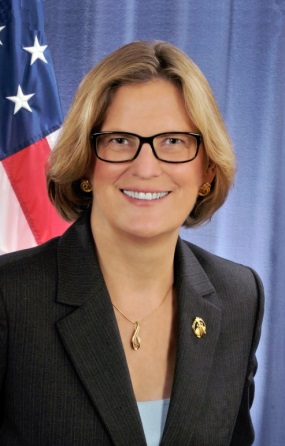- Home
- Agencies
- Department of Agriculture
- Department of Housing and Urban Development
- General Services Administration
- Department of Commerce
- Department of the Interior
- National Aeronautics and Space Administration
- Department of Defense
- Department of Justice
- National Science Foundation
- Department of Education
- Department of Labor
- Office of Personnel Management
- Department of Energy
- Department of State
- Small Business Administration
- Environmental Protection Agency
- Department of Transportation
- Social Security Administration
- Department of Health and Human Services
- Department of the Treasury
- U.S. Agency for International Development
- Department of Homeland Security
- Department of Veterans Affairs
- Goals
- Initiatives
- Programs
Primary tabs
Key to Changes
This text is Revised text
This word has been added to the text
This text is Last Published text
This word has been removed from the text
Modifed styling with no visual changes
FY 14-15: Agency Priority Goal
Confirm elimination of Overfishing
Priority Goal
Goal Overview
The purpose of this goal is to show that by implementing rigorous limits on annual catch, the U.S. can end and prevent overfishing. This is a key step to ensuring the sustainable management of our nation’s fisheries. Federal fishery management is based on the concept of maximum sustainable yield, which is the largest long-term average catch that can be taken from a stock under prevailing environmental and fishery conditions. A stock that is subject to overfishing has a fishing mortality (harvest) rate higher than the rate that produces maximum sustainable yield. The amount of catch equivalent to this harvest rate is the overfishing limit (OFL).
The Magnuson-Stevens Act is the primary law that governs how fisheries are managed in U.S. federal waters. When the Magnuson-Stevens Act was reauthorized in 2007, it mandated that annual catch limits (ACLs) be put in place for all federally managed domestic fish stocks, with certain exceptions. ACLs are set at a level below the OFL to account for scientific uncertainty and to reduce the risk of overfishing. ACLs are in place for all fish stocks as required by the Magnuson-Stevens Act. These catch limits should keep catch below the OFL and prevent overfishing on these stocks. Preventing overfishing should increase the long-term economic and social benefits of the nation’s fisheries.
Strategies
At the time NOAA's National Marine Fisheries Service (NMFS) developed this goal, there were 21 federally managed domestic fish stocks subject to overfishing. For these 21 stocks, we will monitor catch of each stock and compare to the OFL. NOAA uses a complex system of observers, dealer reporting, and logbook requirements to track and verify the catch numbers. If catch exceeds the ACL (always set below the OFL) for any of the 21 stocks, the Magnuson Stevens Act requires steps, known as accountability measures, to end and prevent overfishing. These can include closing the fishery before the end of the planned fishing season, changing gear requirements, and reducing bag limits. The allowable catch may be reduced in the subsequent year.
Progress Update
In the 2013 fishing year, 17 of the 21 stocks met the goal of the Ending Overfishing APG. In the 2014 fishing year, we continued to track the four stocks that did not meet the goal and a combination of management measures were employed. These measures include size limits, trip limits, gear restrictions and seasonal closures.
Final catch estimates are now available for the 2014 fishing year. The APG goal was met (catch was less than the OFL) for two of the four stocks, Gulf of Mexico gray triggerfish and Gulf of Maine haddock. However, catch exceeded the OFL for the other two stocks, South Atlantic speckled hind and Gulf of Maine/Georges Bank windowpane. Therefore, at the end of the APG reporting period overfishing had ended for 19 of the 21 stocks included in this measure.
The two stocks that did not meet the goal are the Gulf of Maine/Georges Bank windowpane and the South Atlantic speckled hind. The catch limits for these stocks were exceeded in spite of strong management measures.
Gulf of Maine/Georges Bank windowpane are not targeted but are caught in groundfish trawl fisheries. NMFS has implemented regulations that require fishermen to use selective trawl gear to reduce the catch of windowpane. NMFS will work with the New England Fishery Management Council to implement additional management measures to further limit the catch of windowpane.
Speckled hind is a prohibited species and retention is illegal in Federal waters of the South Atlantic. However, catch of speckled hind is not prohibited in Florida state waters and 2,253 lbs. of speckled hind were landed. Since the target for the catch was zero, the goal was not met. NMFS will work with the South Atlantic Fishery Management Council and the State of Florida to coordinate fisheries management between State and Federal waters.
Next Steps
Expand All
Performance Indicators
Number of domestic stocks listed as subject to overfishing as of June 30, 2013 for which the annual catch does not exceed the overfishing limit (OFL) in any fishing year
Contributing Programs & Other Factors
NOAA’s NMFS Sustainable Fisheries, Science and Technology, and Enforcement Programs. Through these programs, the actions NOAA and its partners take to end and prevent overfishing are under the authority of the Magnuson-Stevens Fishery Conservation and Management Act (MSA), Atlantic Coastal Fisheries Cooperative Management Act, Atlantic Tunas Convention Act, Interjurisdictional Fisheries Act, and numerous other acts and executive orders, as well as international treaties and conventions. Working within this structure of legislation, collaboration, and international agreements, NOAA maintains and restores productive stocks important to commercial, recreational, tribal, and subsistence fisheries.
Regional Fishery Management Councils. NOAA works with its eight regional fishery management councils as well as with partners at the federal, regional, state and local levels. In each of the seven large marine ecosystems, NOAA collaborates with regional partners and local stakeholders to develop a comprehensive understanding of fishery management and engage constituents in stewardship of the resource. Partners include the U.S. Fish and Wildlife Service, State Department, coastal state management agencies, interstate commissions, Regional Fishery Management Organizations, and international partners. Additionally, NOAA interacts with and receives comments from numerous private sector organizations (commercial and recreational fishing organizations, environmental groups, fishers, general public, etc.).
Strategic Objectives
Strategic Objective:
Statement:
Foster healthy and sustainable marine resources, habitats, and ecosystems through improved management and partnerships. (NOAA)
Description:
The ocean economy contributes more than $250 billion annually to the Nation’s economy, supports approximately 44 million jobs in coastal counties, and enhances diverse ocean-based communities. The many economic, social, and environmental benefits that ocean ecosystems provide are jeopardized by global demands for seafood and energy, coastal development, increased tourism and recreational use. Threats from climate change, ocean acidification, coastal wetland loss, and other environmental stressors are even more ominous. They threaten human health and the domestic food supply. They place greater stress on overexploited fish stocks, iconic marine species, and their habitats, and reduce ecosystem sustainability, biodiversity, and resilience.
Effective policy and management of human activities, based on strong science, partnerships, and technology, are essential to sustain healthy ocean resources, habitats, ecosystems and coastal communities. The Department has strong legislative mandates and a pivotal role in sustaining marine fisheries and ecosystems, protecting sensitive areas and cultural heritage, and limiting the consequences of cumulative impacts.
Agency Priority Goals
Statement: By September 30, 2015, the Department of Commerce will confirm the elimination of overfishing on all 21 U.S. domestic stocks identified as subject to overfishing as of June 30, 2013 by comparing catch data relative to overfishing limits (OFLs).
Description: The purpose of this goal is to show that by implementing rigorous limits on annual catch, the U.S. can end and prevent overfishing. This is a key step to ensuring the sustainable management of our nation’s fisheries. Federal fishery management is based on the concept of maximum sustainable yield, which is the largest long-term average catch that can be taken from a stock under prevailing environmental and fishery conditions. A stock that is subject to overfishing has a fishing mortality (harvest) rate higher than the rate that produces maximum sustainable yield. The amount of catch equivalent to this harvest rate is the overfishing limit (OFL). The Magnuson-Stevens Act is the primary law that governs how fisheries are managed in U.S. federal waters. When the Magnuson-Stevens Act was reauthorized in 2007, it mandated that annual catch limits (ACLs) be put in place for all federally managed domestic fish stocks, with certain exceptions. ACLs are set at a level below the OFL to account for scientific uncertainty and to reduce the risk of overfishing. ACLs are in place for all fish stocks as required by the Magnuson-Stevens Act. These catch limits should keep catch below the OFL and prevent overfishing on these stocks. Preventing overfishing should increase the long-term economic and social benefits of the nation’s fisheries.










